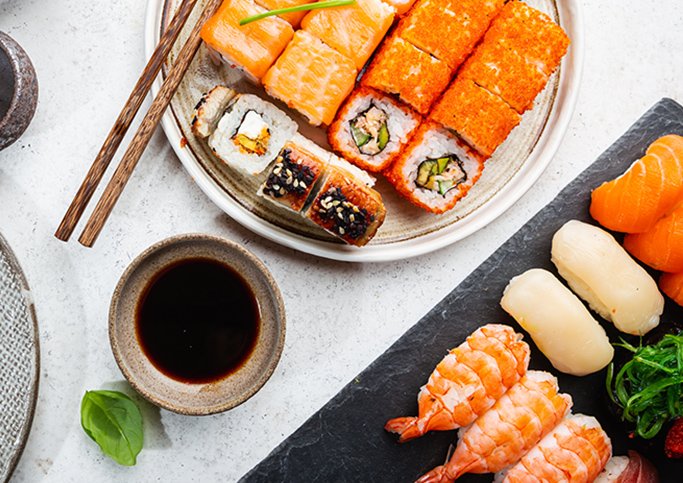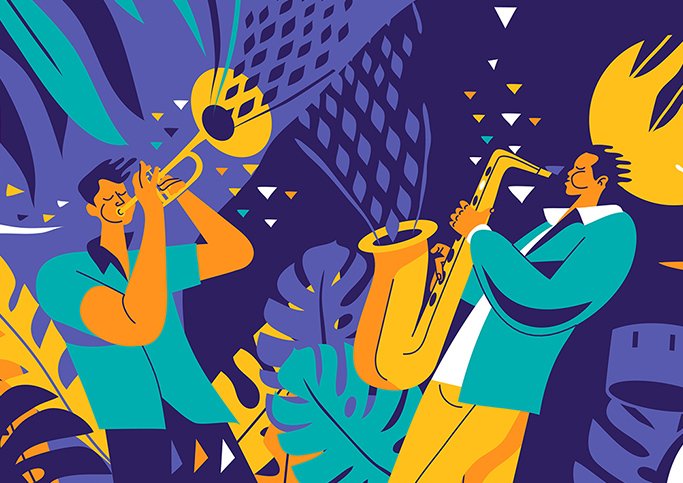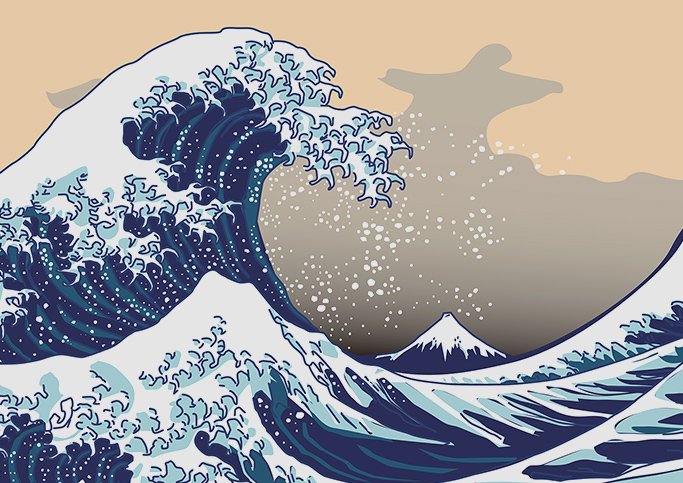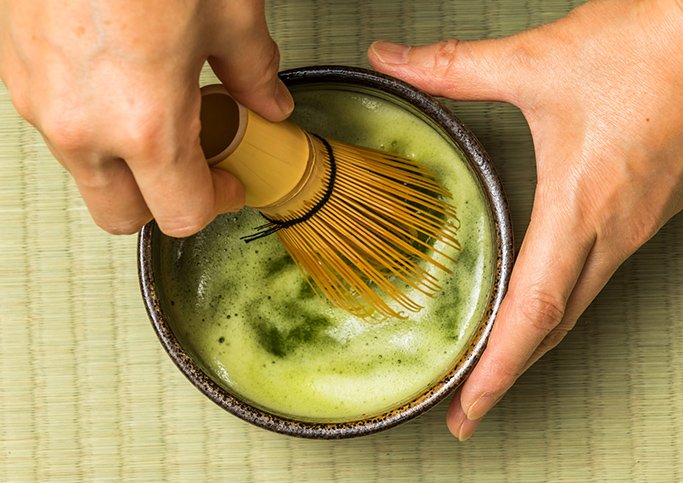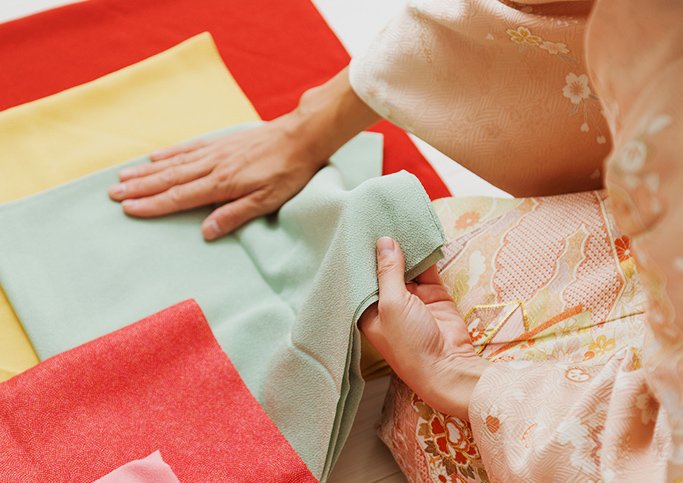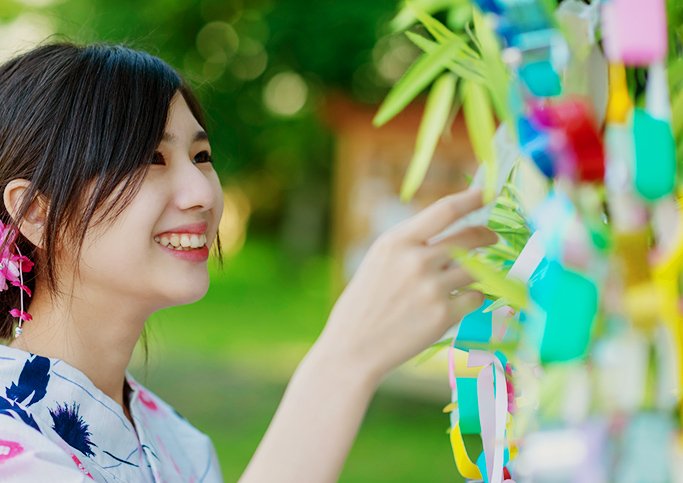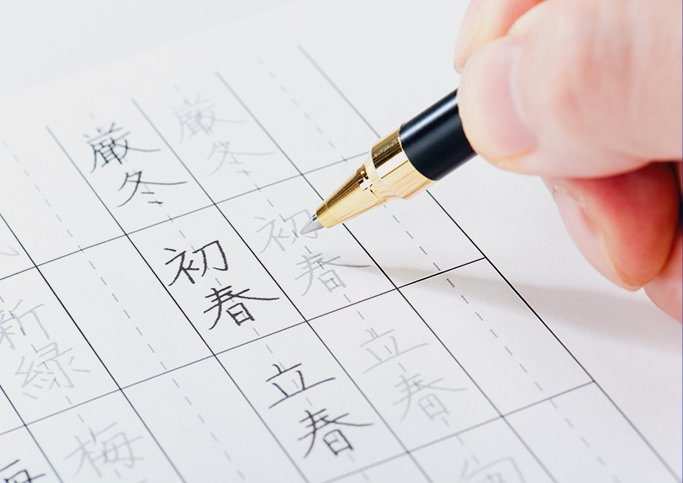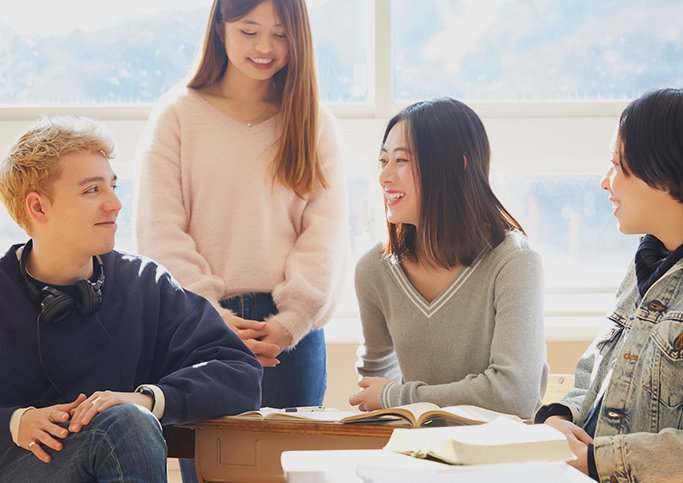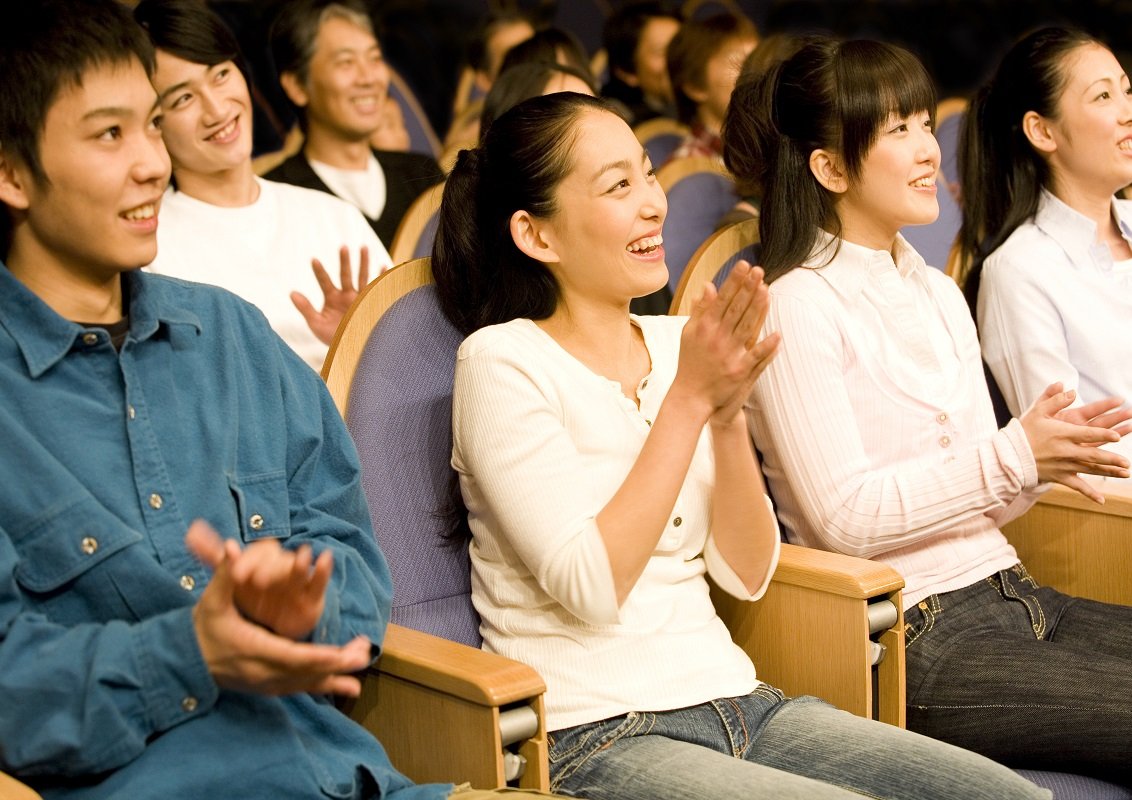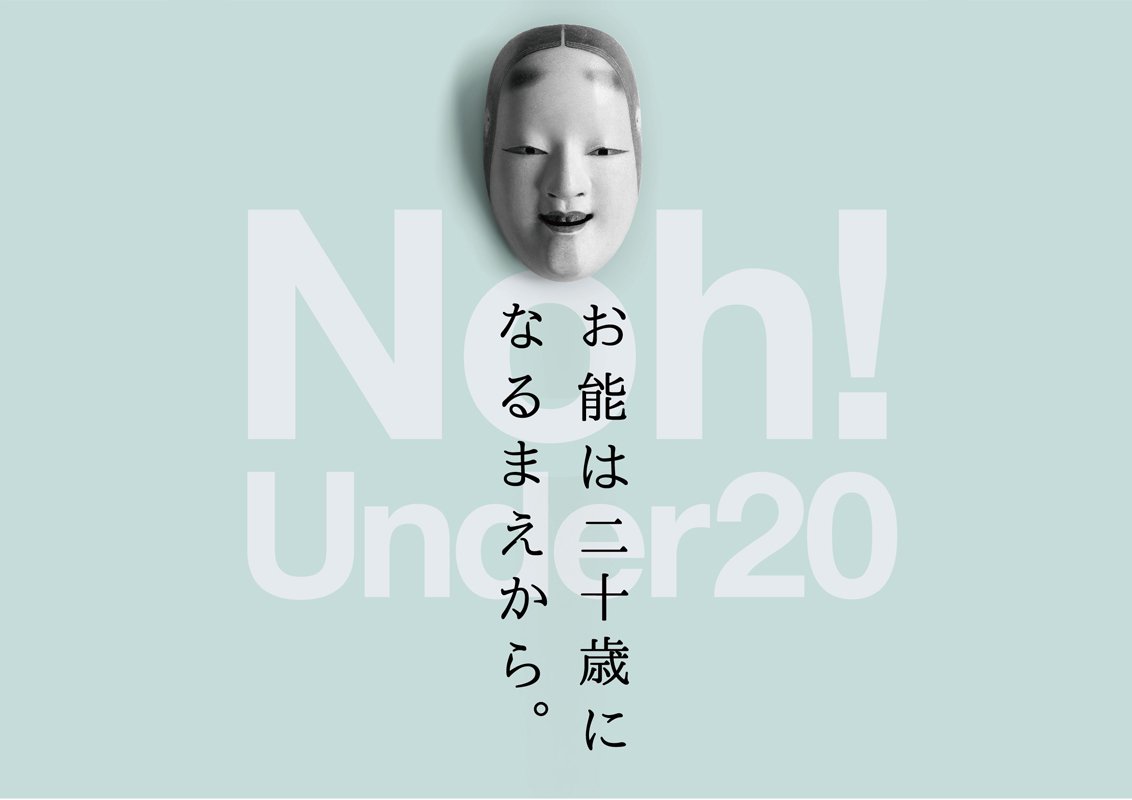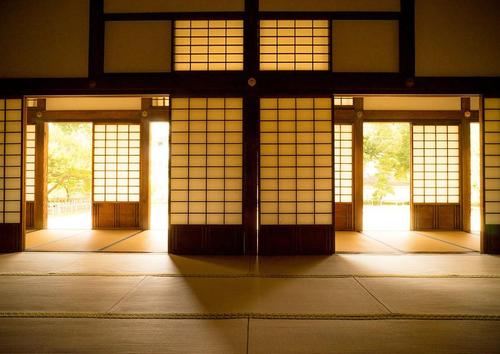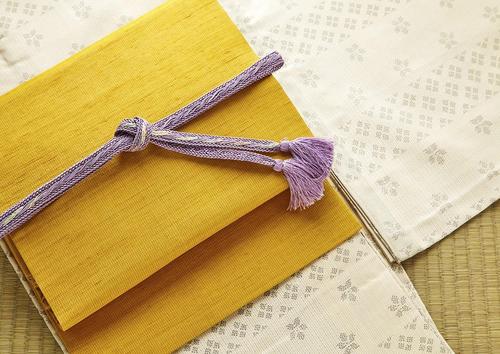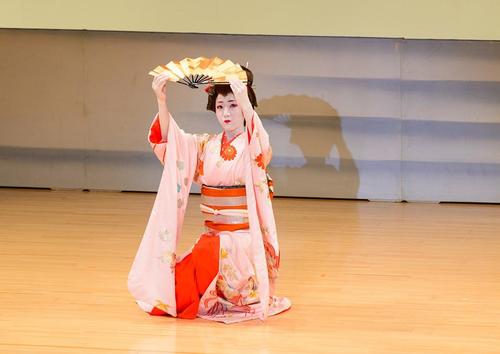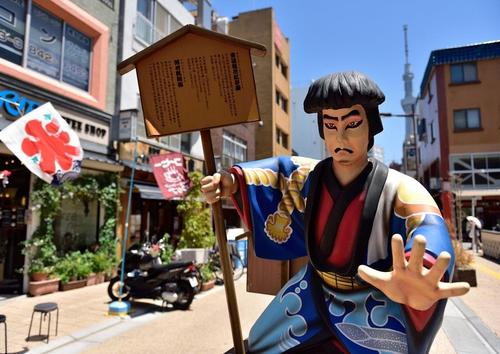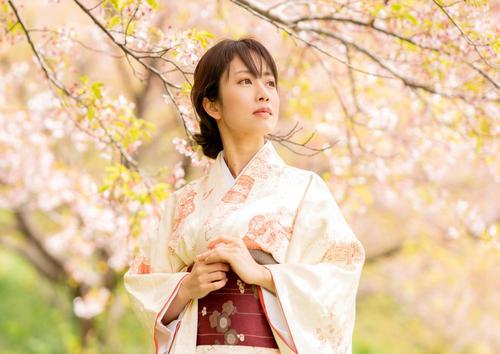
wear
What kind of kimono are there? Explain how to choose the one that suits your rank and TPO!
12/ 4/2020
Kimono is both a traditional Japanese culture and a traditional craft. In modern times, there are few opportunities to wear it, and many people feel that all "kimono" are the same.
Actually, there are various types of kimono, and it is necessary to use them properly according to the TPO. If you dress out of place without knowing it, you will feel embarrassed ...
This time, we will introduce in detail how to choose a kimono that suits your wearing scene.
What is the "case" of a kimono? 
The charm of gorgeous and beautiful kimono has been highly evaluated not only in Japan but also overseas.
In fact, kimono also has a "case" like formal / casual dresses, and you can choose from various options according to your TPO.
There are four types of "cases", in descending order of rank.
- Formal wear (Reisogi) (First dress)
- Formal dress (wearing semi-formal wear)
- Going out (gaishutsugu)
- Street wear (machigi), everyday wear (normal), yukata (yukata)
It is divided into.
Also, the "case" of men's kimono is
- Reisougi
- Fashionable clothes
There are only two stages.
Knowing the "case" of a kimono is like a manner that suits the wearing scene.
It is subdivided into high-quality kimonos that are worn in special situations such as "Hare" and "Ke", and kimonos that can be easily used as familiar everyday clothes such as yukata. ..
Introducing the types of kimono that represent each "case"

There are several types of kimono for each "case".
We will introduce each feature and suitable wearing scenes.
Formal wear (Reisogi) (First dress)
The most prestigious first dress is worn in the most modified seats, such as ceremonial occasions and public ceremonies.
◎ Women's formal wear (first dress)
・ Uchikake
Bride costumes to be worn for weddings and receptions, such as pure white and colored uchikake.
・ Kurotomesode
The first dress for married women. It features a family crest on the back, behind both sleeves, and on both chests, and a pattern on the hem, which is worn by relatives and matchmakers at weddings.
・ Hon furisode
A kimono with a splendid picture feather pattern and long sleeves, the first dress for unmarried women. The overall pattern, the longer the sleeves, the higher the rating. Wear it at coming-of-age ceremonies, weddings, and formal parties.
・ Mofuku(Mourning clothes)
It is also called with a kuromontsuki. A plain black kimono with five crests, used at funerals.
◎ Men's formal wear (Reisogi) (first dress)
・ Kuroba double five crests (with Kuroba lid tsutsumon)
Men's first dress is a haori and hakama with five crests on a black background, regardless of age. It is the most prestigious and formal occasion, and is worn by grooms and matchmakers at weddings.
・ With color crest (with Iromon)
Kimono other than black, haori and hakama, and a formal dress of the same rank as women's colored tomesode. It is a kimono that can be used in a wide range of scenes depending on the material, color, and cresting method.
Abbreviated (Ryakurei Sogi) (Semi-religious)
This is the second most prestigious kimono after the first dress, and is worn at formal occasions such as wedding receptions and entrance ceremonies.
・ Homongi
A kimono with a feather pattern that is dyed and finished like a single picture without the pattern being cut by seams.
・ Furisode
This is the first dress for unmarried women, with long sleeves and a characteristic picture feather pattern similar to Houmongi. It can be worn at coming-of-age ceremonies, weddings and parties.
・ Iro Tomesode
A kimono with a pattern on the hem other than black, which can be worn by both married and unmarried people. In the case of five crests, it becomes the first dress of the same rank as black tomesode, and by reducing the number of crests such as three crests and one crest, it can be used in various scenes as well as visiting clothes and wearing.
・ Tsukesage
A kimono with a design that does not cross the seams, and has a simpler picture feathering than visiting clothes. It is considered to be a lighter outing than a visiting dress.
・ Iromuji
A plain kimono with no pattern, dyed in a color other than black. Generally, one crest is often attached, and depending on how the obi is selected, it can be worn as a semi-formal dress at weddings and tea parties.
・ Edo Komon no Montsuki
It is a kimono dyed entirely with a fine pattern that looks plain at a distance, and the rank varies depending on the size and type of the pattern.
[If you read the article, may you know the meaning of this KARUTA? ]
Going out (gaishutsu gi)
It is a kimono that can be worn in a variety of situations, from something that is a little dignified to something that you can enjoy as a hobby. It's not as daunting as formal wear, but it's less than usual, but you can enjoy it in a fashionable atmosphere.
In addition, men's fashionable clothes can be adjusted widely with or without a haori hakama, so they have a wide range of applications and are convenient.
◎ Women's outing
・ Komon
A kimono with the same pattern repeatedly drawn throughout. It is used as a casual outing for lessons and meals with friends.
・ Shibori
Kimono dyed while tying the fabric with threads or sandwiching it with tools. Rather than a party or dinner, it is often used as a casual fashionable outfit for theater performances and dining with friends.
・ Omeshi
This kimono is woven using yarn-dyed Omemeito, and is considered to be the finest woven kimono. With a silky feel and a finely textured surface, you can feel a unique texture. It can also be worn as a formal dress.
・ Sarasa
A kimono with an exotic pattern of southern origin, similar to a paisley pattern.
・ Tsumugi
Tsumugi is a rather casual kimono, but plain tsumugi has a slightly different impression than tsumugi with Kasuri and striped patterns. As a chic fashionable outfit, wear it at casual parties.
・ Tsukesagekomon
A small pattern is dyed and attached. Although it is a casual category with the same rank as Komon, it has many gorgeous designs and can be used in various scenes as fashionable clothes.
・ Komon (Yuzen)
A kimono with a small pattern drawn with Yuzen dyeing. There are various differences in dyeing and patterns in each region.
・ Tsumugi Houmongi
A light Houmongi with a simple local breeze. Since it is the same as Komon instead of formal wear, it is more suitable for casual parties and dinners than the modified scene.
◎ Men's outing clothes (fashionable clothes)
・ Tsumugi (ensemble)
Since it is not worn as a courtesy, you can wear it as a casual wear without wearing a hakama. Wear a haori coat when you go out, and a hakama when you change seats. Yuki Tsumugi and Oshima Tsumugi are famous.
・ Omeshihitotsu Montsuki
If you add three or one crests to the plain color of the pongee or pongee, the rank will rise, and it will be the same as the plain color crests of women and visiting clothes. As a formal dress, it can also be worn at weddings and revisited occasions.
・ Wool (ensemble)
A kimono that you can easily wear as a streetwear or private everyday wear.
・Joufu
Famous as a summer kimono, a thin linen fabric woven with fine threads. It feels silky and has excellent breathability and water absorption.
Street wear (machigi), everyday wear (normal), yukata (yukata)
A casual kimono to wear when you go out for a while. You can use it like everyday clothes.
・ Kasuri
A kimono with a pattern that looks like it has been scratched in places. In the past, it was used as everyday wear, but now it is also popular as a little outing wear.
・ Meisen
This is a yarn-dyed plain weave silk fabric kimono with a distinctive pattern and texture depending on the place of origin. There are many designs with a retro atmosphere.
·wool
A kimono that is reasonably priced and durable, perfect for everyday use. It has heat retention and is useful in the fall and winter. In most cases, it is used as home wear rather than outing wear.
・ Kihachijo
A yellow striped kimono dyed with vegetable dyes using Hachijojima plants. There are various tones of yellow, creating beautiful stripes and checkered patterns.
・ Tsumugi
A yarn-dyed woven kimono woven using knotted tsumugi yarn. Although it is a high-class item because it is silk thread, it is used in casual situations such as dinner parties with friends, theater performances, and lessons because the quality of kimono is low.
·cotton
Like wool, it is a standard kimono for everyday wear. It's easy to wash and easy to clean, so it's ideal for everyday wear and home wear.
・ Yukata
A thin kimono to wear in the summer. It can be said that it is the most casual and popular kimono. Currently, it is used as a nightwear for inns as well as summer fireworks festivals and festivals.
[Do you care about Japan? Would you like to learn Japanese together? ]
The obi also has a "case"
Like the "case" of a kimono, the obi has a "case". When coordinating, wear both cases together.
・ Maruobi
This is the most prestigious obi, and is worn together with the first dress, bridal gown, black tomesode, and black furisode.
・ Fukuroobi
It is woven in a bag shape and is worn in formal occasions. It has a length of 4.2m or more and is tied with a "double drum".
・ Nagoyaobi
It is a band with a length of about 3.6m and is tied with a "single drum". From semi-formal ones with gold and silver threads and foils to casual ones, it can be used in a wide range of scenes.
・ Kakuobi
This is a men's obi with a width of about 20 cm folded in half. In general, "Hakata tribute" with thickness and elasticity is often selected, and it can be used for almighty from formal wear to casual wear.
・ Hekoobi
A men's obi used for loungewear and casual scenes. Wear it by squeezing a large one of about 74 cm or a medium width of about 50 cm.
This kimono for this scene! How to choose a kimono that suits your TPO
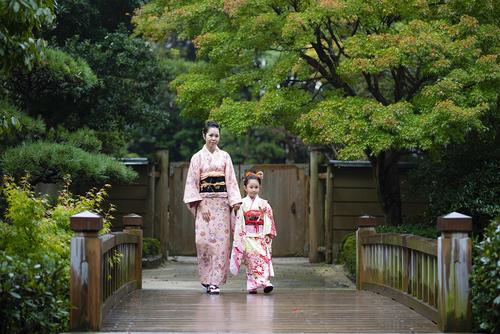
Kimono does not mean that you can wear whatever you like when you want, and you must wear it according to the TPO, just like clothes.
In order not to participate in a high-class party with a rough kimono, or on the contrary, to dress too cleverly in a casual seat, "How to choose a kimono and precautions" according to the typical wearing scene I will also introduce it.
Kimono for formal occasions such as weddings and invitations
Black tomesode is a kimono worn by relatives and matchmakers at weddings. If you are invited to a wedding ceremony other than your relatives, we recommend visiting clothes, furisode, and colored tomesode.
The Houmongi has a picture feather pattern that is dyed like a single picture, and the design is very gorgeous, so it is perfect for a new seat such as a wedding ceremony. Treated like a party dress, you can wear it even in high-class places and calls.
As a caveat, furisode and colored tomesode are not very suitable because they look too gorgeous in casual situations. Wear it at a formal to semi-formal gorgeous party.
For men, we recommend the Kurobane Double Five Crests and Color Crests. The Kuroba double five-crested dress is the same as the first dress, and the colored crest is the same as the female colored tomesode, so you can wear it in a new place.
Kimono to match Shichigosan and the entrance ceremony
In such a scene, it is recommended to wear a formal dress, a dress, a plain color, and a dress. Although it is lower than the first dress, it can be used for a wide range of occasions, from fashionable clothes to gorgeous places, depending on the combination of crests and obi.
Your child will play a leading role in the Shichigosan and entrance ceremonies, so choose one that is not too flashy, not too plain, and has an elegant and gorgeous color.
For men, it is recommended to have one crest. It can be used as a formal dress for parties and modified seats, like a woman's dressing or plain color.
Kimono to wear casually as everyday wear
There are many things that you can wear as fashionable clothes when you go out, such as Edo Komon, Komon, Osamu, Tsumugi, and Yukata. Recommended for casual dinner parties and lessons.
Also, yukata is a relaxing outfit, so wear it in unpretentious scenes such as summer festivals.
Tsumugi and wool kimonos are recommended for men's everyday wear and street wear. Wool kimonos are reasonably priced and easy to clean, so even beginners can easily wear them.
Summary
I introduced that the type and wearing scene of the kimono are decided in detail. If you understand the relationship between TPO and case, you can dress smartly in any situation.
The overall balance can be adjusted by the number of crests and the rank of the obi, so the more you know about the world of "kimono", the deeper the charm. It is because of this diverse depth that I think it will further tickle the spirit of inquiry. It would be great if we could spread this kimono culture that Japan is proud of to foreigners who are interested in Japan.
Mini lesson corner
Learn about Japan and Japanese!
"Do you know the meaning of the animal print of the yukata that you can understand in 90 seconds?"
This article is a partial re-edit of the article published in Nihongo Biyori by KARUTA.
Unauthorized reproduction or use of the contents, text, images, illustrations, etc. of this site is strictly prohibited.
CATEGORIES
FEATURED TAGS
RECOMMENDATION
-
 報BUSINESS TERMS
報BUSINESS TERMSWhat is ”Ho-Ren-So”, one of the basic manners when working in Japan?
10/30/2020
-
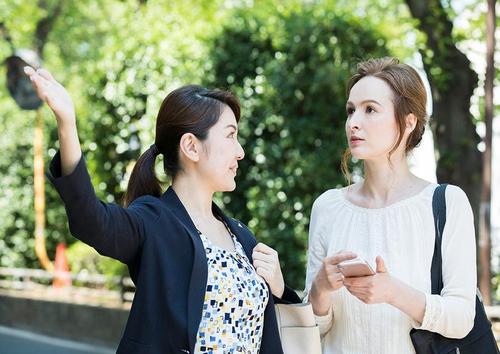 伝WORDS & GRAMMAR
伝WORDS & GRAMMARWhat is easy Japanese?
10/30/2020
-
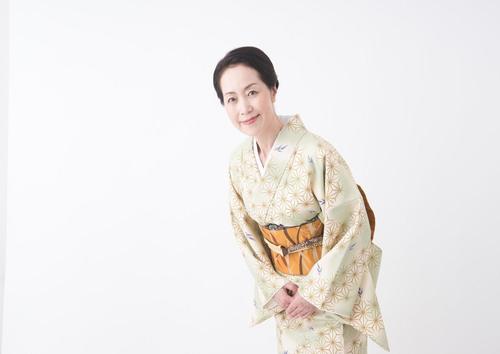 礼MANNERS
礼MANNERSJapanese greeting customs and origins. What are the greetings from other countries?
10/30/2020
-
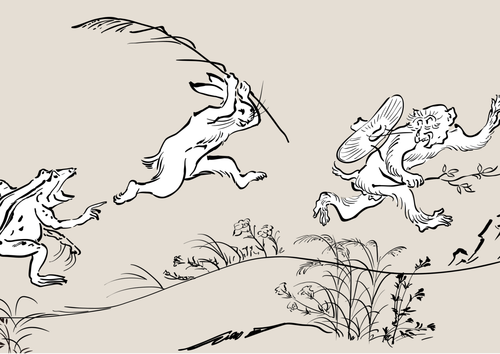 戯COMIC & GAME
戯COMIC & GAMEThe roots of animation and manga? Introducing bird and beast caricatures
10/30/2020
-
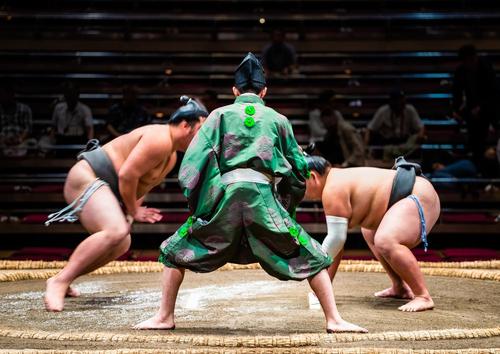 戦SPORTS
戦SPORTSThe history of sumo goes back to the mythical world! ?? Transition from myth to modern times
10/30/2020
LET’S PLAY
KARUTA!
Do you know the meaning of this...
NEXT...
FURTHER EXPLORATION
INTERESTED
IN JAPAN?
WHY DON’T YOU
LEARN JAPANESE WITH US?
START LEARNING
JAPANESE
WITH HUMAN ACADEMY!
ONE OF
THE MOST POPULAR
JAPANESE
LANGUAGE SCHOOLS
JAPANESE
LANGUAGE SCHOOL
OFFERING EXCELLENT
DETAILED LESSONS

ONLINE SCHOOL
- Learn with your classmates from all over the world
- Variety of Courses for All Needs
- FREE Trial Lesson available

TOKYO, OSAKA
- Offer the Best Curriculum for You
- Make New Japanese Learning Friends
- Many Opportunities to Practice Japanese
MAKE FURTHER
STEPS
WITH HUMAN ACADEMY!
ONE OF
THE MOST POPULAR
JAPANESE
LANGUAGE SCHOOLS
JAPANESE
LANGUAGE SCHOOL
PRODUCING MANY
JLPT N1 CERTIFIED
STUDENTS!

ONLINE SCHOOL
- Learn with your classmates from all over the world
- Variety of Courses for All Needs
- FREE Trial Lesson available

TOKYO, OSAKA
- Support Your Higher Goal of Japanese Learning
- Perfect Environment for Japanese Learners
- Learn with Your New Japanese Study Mates



